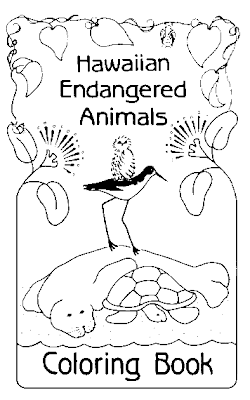What's Happening in Hawaii
during the 4th week in November:
Starting this week, 'amakihi are starting to nest in high, native forests on the island of Hawai'i. Although breeding at this time of year is unusual for Hawaiian birds, 'amakihi and nēnē have both developed this behavior. Perhaps there is a greater availability of food available during the rainy season.
The Hawai‘i ‘amakihi (Hemignathus virens) is a small generalist Hawaiian honeycreeper (Family: Fringillidae) that occurs on the islands of Hawai‘i, Maui, and Moloka‘i. Until 1995, the Hawai‘i ‘amakihi, and the O‘ahu 'amakihi (H. flavus) and Kaua‘i ‘amakihi (H. kauaiensis) were considered a single species: the common ‘amakihi (H. virens).
Plumage of all species is similar; males are yellow-green to olive in color, and females are generally similar, but duller. All have decurved bills.
Hawai‘i ‘amakihi are generalized foragers that most often glean arthropods from the leaves, blossoms, twigs, branches, and less frequently from tree trunks of a variety of trees, ferns, and shrubs. This species feeds on nectar predominately from the flowers of ‘ōhi‘a (Metrosideros polymorpha), māmane (Sophora chrysophylla), and native lobelias (Campanulaceae), but also forages on flowers of a number of other native and non-native plants. Hawai‘i ‘amakihi also eats fruit from native and non-native plants, but predominately from pilo (Coprosma spp.).
Hawai'i 'amakihi forages alone, in pairs, in family groups, or in mixed flocks. Courtship behavior is somewhat complex and includes courtship chases, advertising displays, and courtship feeding. Pairs will remain together for successive breeding seasons. The pair selects a nest site, the female builds an open-cup nest, then lays two or three eggs. Only females incubate eggs and brood nestlings. Males deliver food to females who then feed nestlings. Fledglings are dependent on parents for up to three months. The Hawai‘i ‘amakihi usually raise two broods in a season.
Drawn images taken from "Hawaii: A Calendar of Natural Events"
published by Bishop Museum and Kamehameha Schools in 1989
For more info about 'amakihi, and to see photos, visit the Hawaii Comprehensive Conservation Strategy forest bird fact sheets.
Or click on the names below:


















